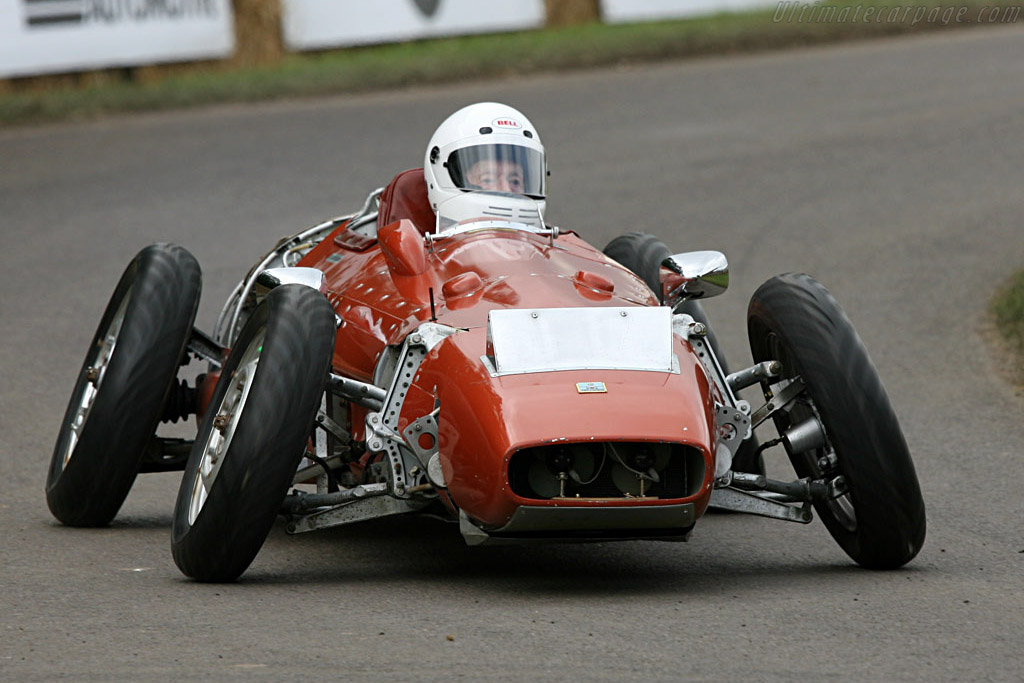
It was designed by William F. Milliken, Jr. which means it has to be taken seriously as he knew exactly what he was doing when he did it.
http://en.wikipedia.org/wiki/William_F._Milliken,_Jr.
I am once again grasshopper.

Just when I thought I had just a little understanding of car suspension, I found this...

It was designed by William F. Milliken, Jr. which means it has to be taken seriously as he knew exactly what he was doing when he did it.
http://en.wikipedia.org/wiki/William_F._Milliken,_Jr.
I am once again grasshopper.
In the mortal words of Odd Ball "Donald Sutherland" in the movie Kelly's Heros
"Always with the negative waves Moriarty, always with the negative waves."
wowwww thats a nice camber.
quote:
Originally posted by jossey
wowwww thats a nice camber.
IIRC that was designed to show you could break the 'rules' if you know what you're doing.
Regards
Hugh
With motorcycle tires it can work, never mind the huge CV angle at the rear...
Now this on the other hand, I don't know where to start, other than hit the driver over the head with a frozen trout...
This is Not a photochop'd picture, unfortunatley. It's the latest thing kids are doing to show how cool they are...
http://www.7tune.com/oni-camber/

I was hoping to use the same idea as Miliken as I have an idea for a "green" car and this concept supports high speed and low friction. The key is to get the angles right so you get the car to handle very well in bends. My idea is to use bigger wheels though.
ive vaguely thought about this a few times. not sure it would be practical on a road car though, due to the fact that under normal road conditions
over a lot of miles you will get a flat spot on the tyre, and then one day when you push it a bit and tyre cambers over on to the edge of that flat
spot youll get less contact area.
on the plus side- when one side wears down you could get them swapped round and re use the other side! thus saving on new rubber!
I just noticed in the picture up top, the driver's left-rear tire looks really strange, like it's pointing a different way than the other
three...
[Edited on 5/10/10 by kb58]
Somewhere in the piling system, I have a magazine article on the Milliken car. You can see from the photos there are lots of optional mounting holes
for suspension arms etc. It was designed and built as a test bed for various suspension ideas and is (from memory) shown in that picture with maximum
camber all round.
Update: I found I had the scans of the article online -
in this gallery. Use the
magnifying glass icon to enlarge.
Dominic
There are three or so statements in there, that say everything you need to design suspension for todays tyres.
The books by him and his son are a must have, if you can muster up the cost! 
Cheers,
Nev.
quote:
Originally posted by kb58
I just noticed in the picture up top, the driver's left-rear tire looks really strange, like it's pointing a different way than the other three...
[Edited on 5/10/10 by kb58]
quote:
Originally posted by hughpinder
IIRC that was designed to show you could break the 'rules' if you know what you're doing.
